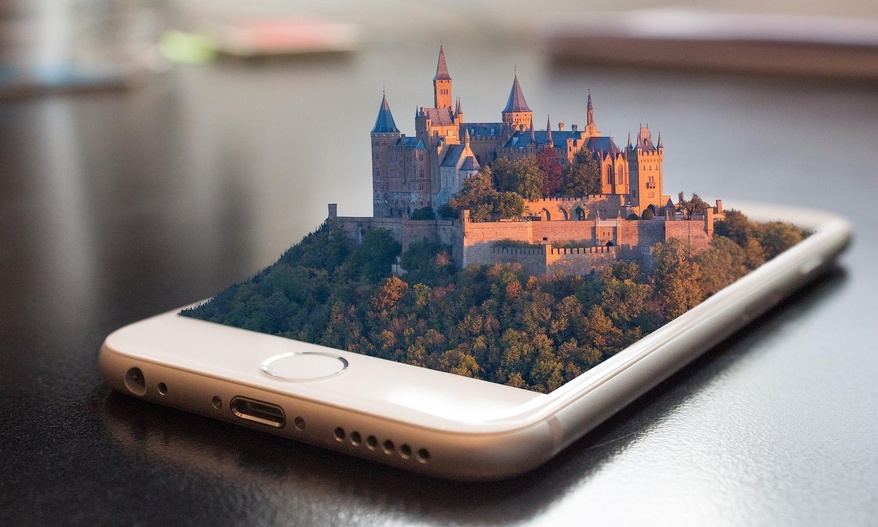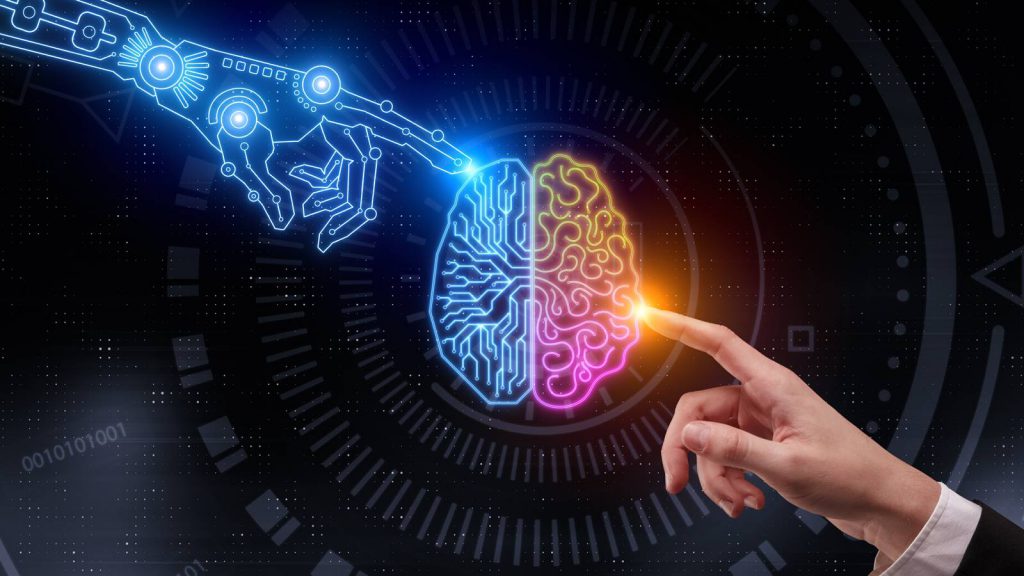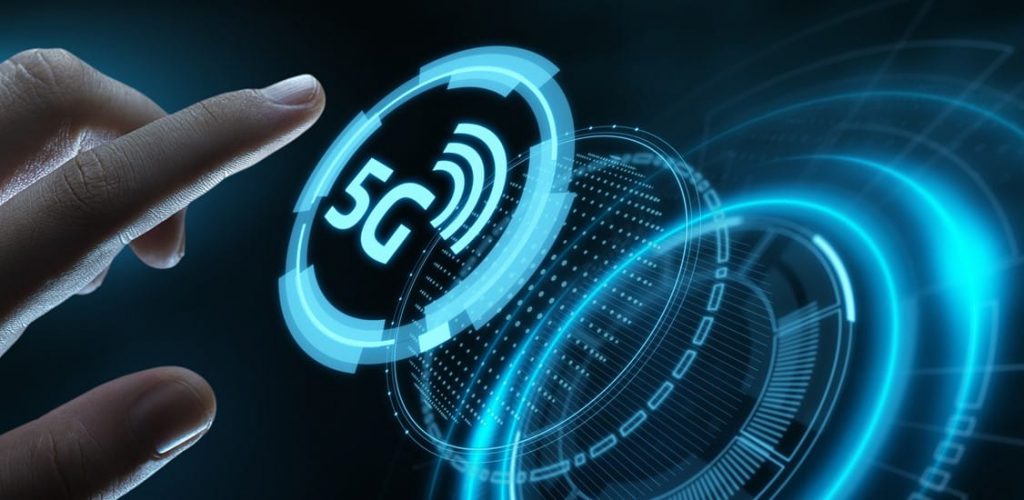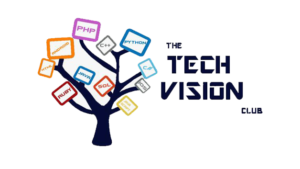
Tech Info

Augmented Reality
Augmented reality (AR) is an enhanced version of the real physical world that is achieved through the use of digital visual elements, sound, or other sensory stimuli delivered via technology. AR got a lot of attention in 2016 when the game Pokemon Go made it possible to interact with Pokémon superimposed on the world via a smartphone screen.

Artificial Intelligence of Things
The Artificial Intelligence of Things (AIoT) is the combination of artificial intelligence (AI) technologies with the Internet of Things (IoT) infrastructure to achieve more efficient IoT operations, improve human-machine interactions and enhance data management and analytics.

5G Technology
5G is the 5th generation mobile network. It is a new global wireless standard after 1G, 2G, 3G, and 4G networks. 5G enables a new kind of network that is designed to connect virtually everyone and everything together including machines, objects, and devices.
Augmented Reality
Augmented reality (AR) is an enhanced version of the real physical world that is achieved through the use of digital visual elements, sound, or other sensory stimuli delivered via technology.
AR got a lot of attention in 2016 when the game Pokémon Go made it possible to interact with Pokémon superimposed on the world via a smartphone screen.
Augmented reality (AR) adds digital elements to a live view often by using the camera on a smartphone. Virtual reality (VR) implies a complete immersion experience that shuts out the physical world.
The Equipment
AR images can be displayed on a multitude of devices including eyeglasses and goggles (remember Google Glass?), headsets, and heads-up displays like helmet visors, but the most common way to use AR these days is on a smartphone, in a variety of apps and games.
How does it work
Consider playing an augmented reality board game using a real cereal box as the physical support. First, computer vision processes the raw image from the camera, and recognizes the cereal box. This triggers the game. The rendering module augments the original frame with the AR game making sure it precisely overlaps with the cereal box. For this it uses the 3D position and orientation of the box determined by computer vision. Since augmented reality is live, all the above has to happen every time a new frame comes from the camera. Most modern phones work at 30 frames per second, which gives us only 30 milliseconds to do all this. In many cases the AR feed you see through the camera is delayed by roughly 50 ms to allow all this to happen, but our brain does not notice!
While our brain is extremely good at understanding images, this remains a very difficult problem for computers. There is a whole branch of Computer Science dedicated to it called computer vision. Augmented reality requires understanding the world around the user in terms of both semantics and 3D geometry. Semantics answers the “what?” question, for example recognizing the cereal box, or that there is a face in the image. Geometry answers the “where?” question, and infers where the cereal box or the face are in the 3D world, and which way they are facing. Without geometry, AR content cannot be displayed at the right place and angle, which is essential to make it feel part of the physical world. Often, we need to develop new techniques for each domain. For example, computer vision methods that work for a cereal box are quite different from those used for a face.
Future scope
- E-Commerce – Many companies will be integrating AR into their websites and mobile apps. In retail, this will result in applications that seamlessly “clothe” a user in sunglasses, jackets, footwear, and jewelry via the camera in the person’s smartphone.
- Digital Marketing – AR technologies will continue to improve the way customers engage with brands. Marketing AR will likely be seen in packaging, on street signs, through gaming apps, and through interactions with other products.
- Geolocation – The ability of mobile devices to inform us of our surroundings be greatly improved over time. AR could benefit everything from real-time travel advisories to restaurant suggestions.
- Educational Resources – Researchers are already attempting to find new and beneficial ways to use AR in training situations. The military and healthcare industries, in particular, are developing powerful AR training simulations.
Benefits of AR
- The primary benefit of Augmented Reality is that it can be used by anyone including mentally and physically disabled individuals.
- It blurs the line of difference between the virtual and real world, thus increasing its usability and effectiveness in the area of application.
- It possesses a highly interactive nature which enable to assess several instances in advance.
- Success or failure of an instance can be determined by using the computing power of AR, thus saving a ton of money.
- It finds its heavy usage in the field of health, thus increasing the accuracy of diagnosis for diseases. Since now, it has saved lives of numerous patients.
Drawbacks of AR
- One major drawback of AR based application is the lack of privacy
- AR based applications or devices cannot be leveraged without appropriate training thus increase costs and time involved
- There can be certain instances where such applications have recorded low performance, thus reducing the overall appeal of the package.
- It can get extremely costly to develop and maintain an AR based device or an application.
Artificial Intelligence of Things
The Artificial Intelligence of Things (AIoT) is the combination of artificial intelligence (AI) technologies with the Internet of Things (IoT) infrastructure to achieve more efficient IoT operations, improve human-machine interactions and enhance data management and analytics. AI can be used to transform IoT data into useful information for improved decision making processes, thus creating a foundation for newer technology such as IoT Data as a Service (IoTDaaS).
AIoT is transformational and mutually beneficial for both types of technology as AI adds value to IoT through machine learning capabilities and IoT adds value to AI through connectivity, signaling and data exchange. As IoT networks spread throughout major industries, there will be an increasingly large amount of human-oriented and machine-generated unstructured data. AIoT can provide support for data analytics solutions that can create value out of this IoT-generated data.
With AIoT, AI is embedded into infrastructure components, such as programs, chipsets and edge computing, all interconnected with IoT networks. APIs are then used to extend interoperability between components at the device level, software level and platform level. These units will focus primarily on optimizing system and network operations as well as extracting value from data.
Applications of AIOT
Many AIoT applications are currently retail product oriented and often focus on the implementation of cognitive computing in consumer appliances. For example, smart home technology would be considered a part of AIoT as smart appliances learn through human interaction and response.
In one specific use case example, AIoT solutions could also be integrated with social media and human resources-related platforms to create an AI Decision as a Service function for HR professionals.
The Major AIoT Segments
So where are AI and the IoT headed together?
There are four major segments in which the AIoT is making an impact: wearables, smart home, smart city, and smart industry:
- Wearables
Wearable devices such as smartwatches continuously monitor and track user preferences and habits. Not only has this led to impactful applications in the healthtech sector, it also works well for sports and fitness. According to leading tech research firm Gartner, the global wearable device market is estimated to see more than $87 billion in revenue by 2023.
- Smart Home
Houses that respond to your every request are no longer restricted to science fiction. Smart homes are able to leverage appliances, lighting, electronic devices and more, learning a homeowner’s habits and developing automated “support.”
This seamless access also brings about additional perks of improved energy efficiency. As a result, the smart home market could see a compound annual growth rate (CAGR) of 25% between 2020-2025, to reach $246 billion.
- Smart City
As more and more people flock from rural to urban areas, cities are evolving into safer, more convenient places to live. Smart city innovations are keeping pace, with investments going towards improving public safety, transport, and energy efficiency.
The practical applications of AI in traffic control are already becoming clear. In New Delhi, home to some of the world’s most traffic-congested roads, an Intelligent Transport Management System (ITMS) is in use to make ‘real time dynamic decisions on traffic flows’.
- Smart Industry
Last but not least, industries from manufacturing to mining rely on digital transformation to become more efficient and reduce human error.
From real-time data analytics to supply-chain sensors, smart devices help prevent costly errors in industry. In fact, Gartner also estimates that over 80% of enterprise IoT projects will incorporate AI by 2022.
5G Technology
What is 5G Technology?
5G is the 5th generation mobile network. It is a new global wireless standard after 1G, 2G, 3G, and 4G networks. 5G enables a new kind of network that is designed to connect virtually everyone and everything together including machines, objects, and devices.
5G wireless technology is meant to deliver higher multi-Gbps peak data speeds, ultra low latency, more reliability, massive network capacity, increased availability, and a more uniform user experience to more users. Higher performance and improved efficiency empower new user experiences and connects new industries.
How is 5G better than 4G?
There are several reasons that 5G will be better than 4G:
-
5G is significantly faster than 4G
• 5G has more capacity than 4G
• 5G has significantly lower latency than 4G
• 5G is a unified platform that is more capable than 4G
• 5G uses spectrum better than 4G
Advanced Features:
In comparison to previous radio technologies, 5G has following advancement −
- Practically possible to avail the super speed i.e. 1 to 10 Gbps.
- Latency will be 1 millisecond (end-to-end round trip).
- 1,000x bandwidth per unit area.
- Feasibility to connect 10 to 100 number of devices.
- Worldwide coverage.
- About 90% reduction in network energy usage.
- Battery life will be much longer.
- Whole world will be in wi fi zone.
Where is 5G being used?
Broadly speaking, 5G is used across three main types of connected services, including enhanced mobile broadband, mission-critical communications, and the massive IoT. A defining capability of 5G is that it is designed for forward compatibility—the ability to flexibly support future services that are unknown today.
Is 5G available now?
Yes, 5G is already here today, and global operators started launching new 5G networks in early 2019. Also, all major phone manufacturers are commercializing 5G phones. And soon, even more people may be able to access 5G.
5G has been deployed in 60+ countries and counting. We are seeing much faster rollout and adoption compared with 4G. Consumers are very excited about the high speeds and low latencies. But 5G goes beyond these benefits by also providing the capability for mission-critical services, enhanced mobile broadband and massive IoT.
The global rollout of 5G is set to be one of the largest tech projects of the new decade. In 2020, Ericsson says 1.1 percent of smartphones will have a 5G mobile subscription and by 2025 this will have shot up to 30.1 percent. 5G is hitting the mainstream fast: According to a GSA report, 38 countries had 5G networks as of August and many more have had 5G mobile technology deployed in part. It is in fact expected that 5G will reach 1 billion users in 3.5 years, compared with 4 years for 4G and 12 years for 3G.
5G – Future Scope
5th generation technology is designed to provide incredible and remarkable data capabilities, unhindered call volumes, and immeasurable data broadcast within the latest mobile operating system. Hence, it is more intelligent technology, which will interconnect the entire world without limits. Likewise, our world would have universal and uninterrupted access to information, communication, and entertainment that will open a new dimension to our lives and will change our life style meaningfully.
Moreover, governments and regulators can use this technology as an opportunity for the good governance and can create healthier environments, which will definitely encourage continuing investment in 5G, the next generation technology.

